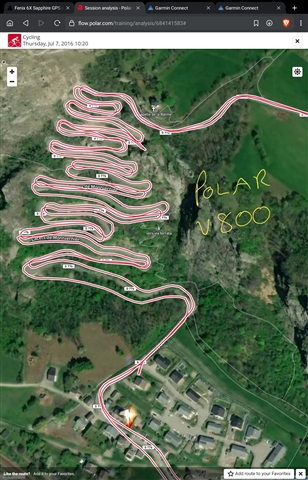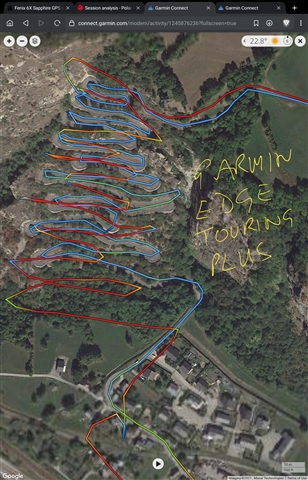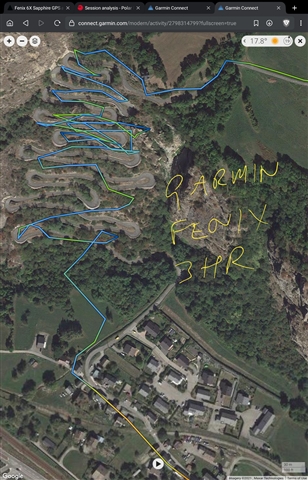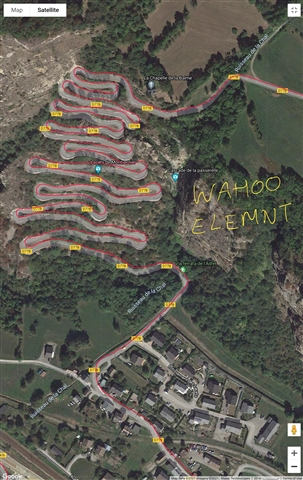A friend and I just completed a 4 day hike over 58kms (36 miles) of wilderness west of Sydney. I had a Fenix 6X Sapphire and an eTrex 30, and he had a Fenix 6X Sapphire and an eTrex 20. (We also had well marked paper topographical maps.) We hoped that the Fenix 6X's would fare well enough that we could, in the future, leave the eTrex units at home.
However there were numerous occasions where the Fenix' drifted away from the eTrex' recorded tracks. At one time both Fenix locations froze and ended up more than 200m away from our actual location, whereas the eTrex units kept moving, then over the following 10 mins the Fenix tracks jumped forward to catch up with the eTrex.
In many places we hike, an error of more than 10 metres could result in being above or below a cliff-line, resulting in a lot of wasted time back-tracking.
The overlay of the Fenix and eTrex tracks from the 4 days makes for interesting viewing, at least for me. :-)
Has anyone else done this comparison? Does anyone rely on the Fenix 6 online for hiking? Does anyone know specifics about differences in GPS chipsets and performance in these units?
Cheers,
Michael
(Another annoyance was the quality of some of the tracks in the Fenix Garmin topo maps. In one area, it was clear that the track was supplied by someone using a GPS who got lost a few times and had to course correct.)






